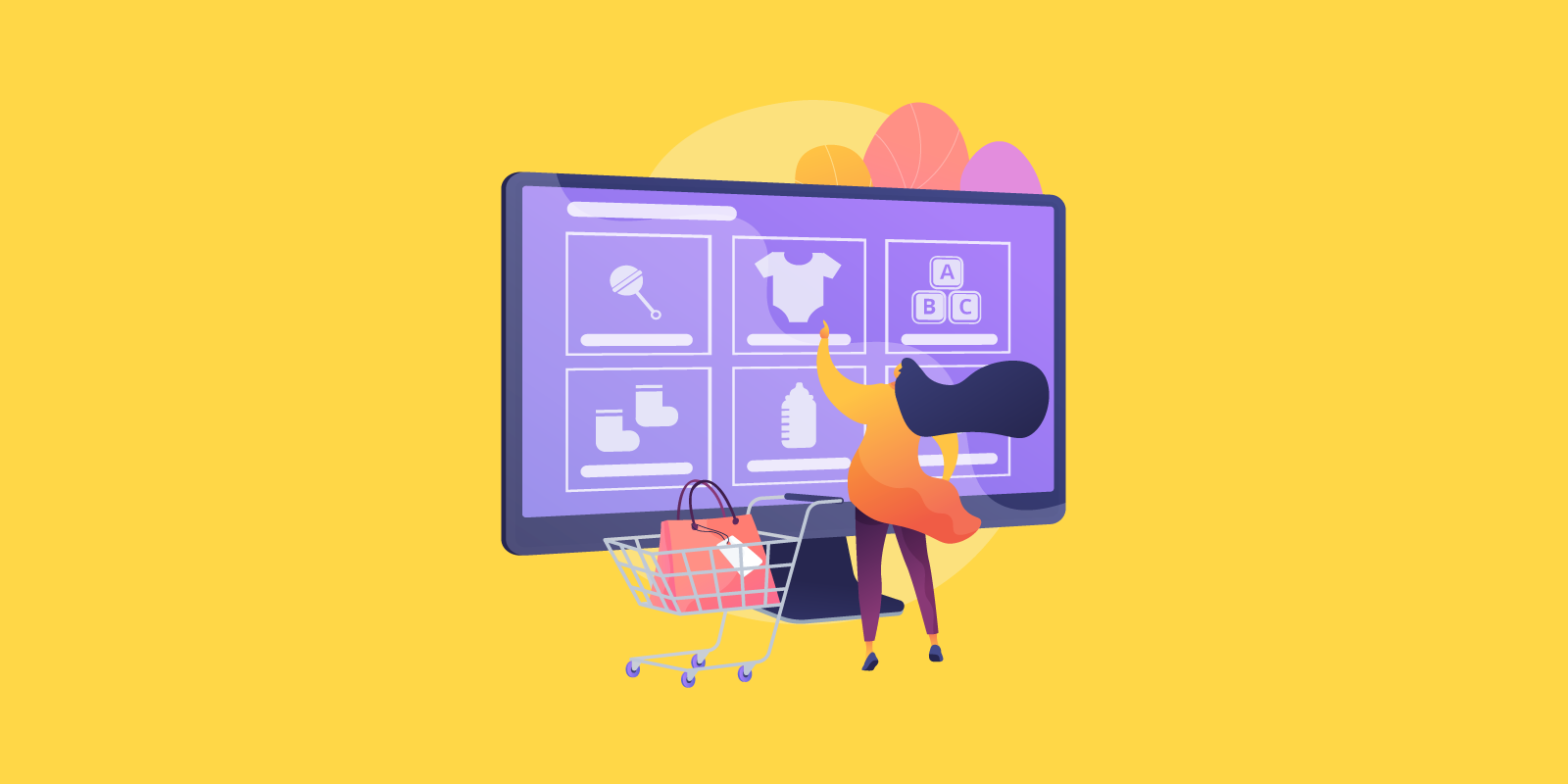Shopify is one of the most popular platforms among eCommerce businesses, and there are plenty of reasons why that is. First of all, it’s packed with all the necessary features you need to create and run your eCommerce store, as well as handle the point of sale aspect of the business.
On top of that, it is a hosted solution, which means you don’t have to worry about setting it up or installing it. It isn’t necessary to have coding skills or download extra software. That is a big advantage of Shopify compared to WordPress, for example. And it’s not just small and medium-sized businesses that use it either, since there is a long and reputable list of companies that rely on it, such as GitHub, General Electric, Tesla, and even the Foo Fighters. In other words, all of the biggest names in their respective industries use it to increase sales and grow their business.
However, as powerful as Shopify is, you need to put in hard work in order to figure out how to promote your Shopify store and stand out from the rest. This is easier said than done, since there are over 800,000 stores powered by Shopify, and some percentage of those are your direct competitors.
Social media platform are the most obvious choice, especially Facebook, which represent the number one source of social traffic and sales, with nearly ⅓ of all social media visits to Shopify stores coming from Facebook. With that in mind, let’s take look at our ultimate guide on how to promote your Shopify store.
In this article
1. Get the Influencers to Promote Your Shopify Store
There is a huge number of eCommerce strategies that can help you boost sales, and most of them are effective, but it’s not just a matter of implementing as many of them as possible and seeing what sticks. For example, if you are looking for how to promote your Shopify store, you are sure to come across advice telling you to start a blog and use the power of content marketing to generate significant traffic and direct it to your store. The same goes for your social media profiles, which should be updated regularly.
While completely useful and valid, these methods are definitely not the first place to start because, in the beginning, you won’t have a sizeable audience to make use of blogging and social media. This is the reason why getting the influencers to work with you should be the first step toward promoting your Shopify store. Influencers have a huge number of followers, and just one tweet or post on Instagram or Facebook about your products can instantly expose you to their audience and send a surge of traffic to your Shopify store.
Obviously, influencers want to be compensated for their services, and it’s up to you to strike up a deal that works for both sides, whether it’s a fixed fee, a percentage, or free products, depending on how popular they are.
Let’s take Michelle Phan as an example. She is the biggest beauty influencer on Instagram, with over two million followers, so you can rest assured that brands are offering her all sorts of deals. For instance, here is one of her posts where she is demonstrating the use of a skin hydration serum made by Klur:
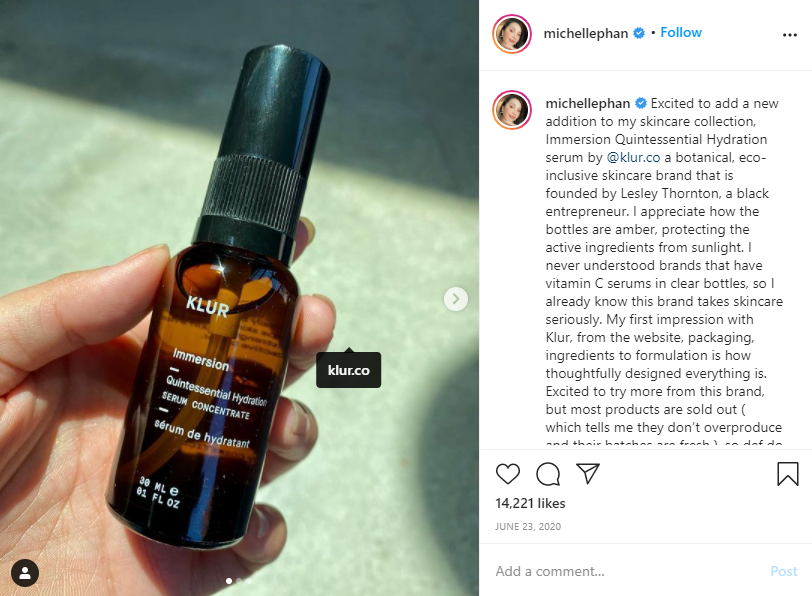
Obviously, she links to the brand’s Instagram page in her posts, which will drive a lot of traffic to her sponsor. Now, given that she’s a major influencer, the company that produces the serum obviously offered here some kind of a deal in exchange for her promoting their products. If your Shopify store is just starting out, you might want to go after less exposed influencers, since influencers with more than a million followers can easily charge upwards of tens of thousands of dollars for their services. If you have that kind of cash, that’s great, but most new stores don’t. Make a list of all the influencers in your niche and email them. Then ask them to promote your products in exchange for a small fee or free products.
2. Build a Following on Instagram
Just because you are working with influencers in your niche doesn’t mean that you shouldn’t be active on social media, such as Facebook and especially Instagram. Why Instagram? Well, while you should definitely be present on all relevant social media platforms, Instagram might just be the best place to promote your Shopify store, especially if you are just getting started, because Instagram users are more active and engaged than Facebook or Twitter users. They are way more responsive and receptive to brands there than on any other social media site. Putting all of your eggs in one basket is what does the trick here.
Why not Facebook, since so much traffic on Shopify is coming from there? Well, if you want to see any real results with Facebook, you will have to rely on paid advertising, that’s the first reason. The second is that everyone does this, which means there is a danger of marketing oversaturation on Facebook. Also, Instagram enables you to reach a bigger audience for free, especially if you know your way around hashtags, as well as branded hashtags. In addition to that, your Instagram followers make a direct purchase thanks to the “Buy now” button that is available next to each post.
Finally, since Instagram is visually oriented, you can post images and videos of your products, as well as invite your customers to submit videos and images of them using your products. One of the better examples of how you can use your products to promote your content is Milk, which is a makeup brand with a sizeable Instagram following of 1.9 million. Here is how they feature their products:
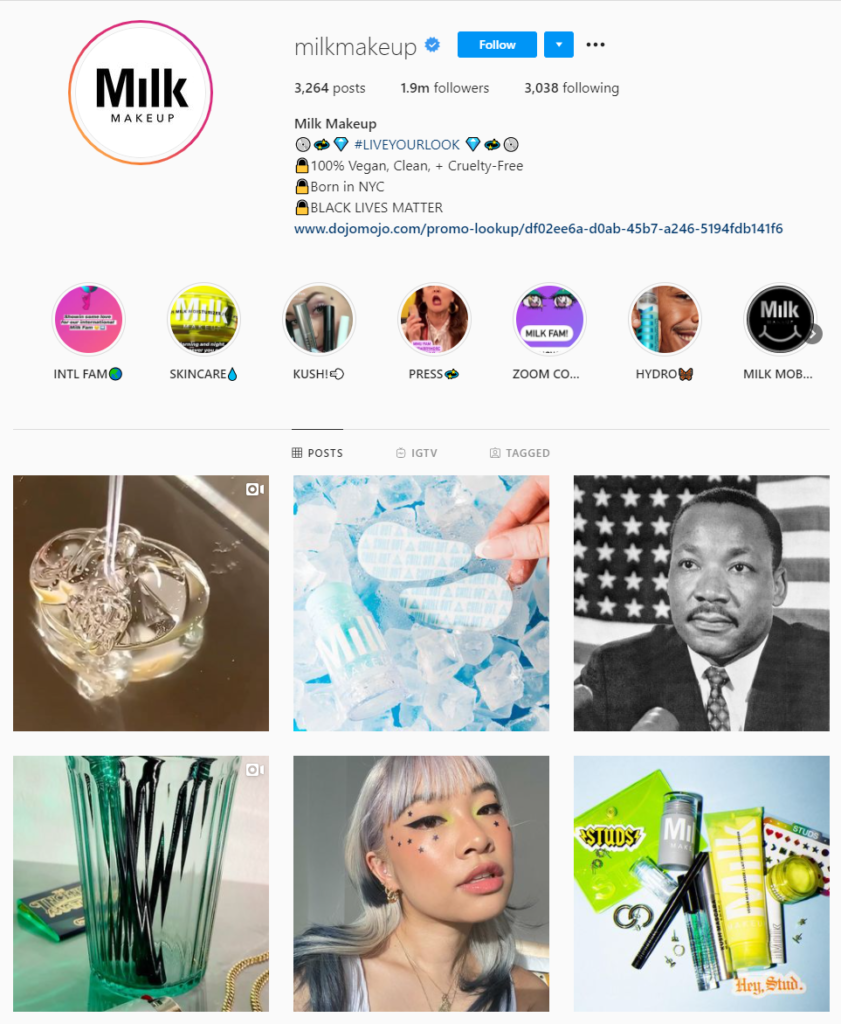
They have a pretty good combination of posts that are done professionally, as well as those which are produced by influencers, as well as their regular customers. This makes their content appear less sales-oriented, and more organic, since their products are used by regular people, and the content itself is shot by a smartphone camera, and not a professional camera crew.
3. Invest in Email Marketing
If ROI is anything to go by, and it definitely is, email marketing is the most effective form of marketing, since it beats pretty much everything else. This is especially true for online businesses that use Shopify to promote their store. Every time someone purchases a product from your store, you will need to collect their email address. After that, you can send them newsletters about new products, as well as sales, discounts, and giveaways. Also, in case they have abandoned their shopping cart on your Shopify store, you can send them a cart abandonment email, and subtly invite them to complete their purchase.
You can use the same tactic to send emails in which you will advertise products that are complementary to those they have already purchased from you or to upsell or cross-sell products. You can also add a sign-up form on your website and collect more emails from those who haven’t become your customers just yet. The people that are on your email list are most likely the become repeat customers, which is why you should always go for retaining them, instead of pursuing new ones, in case you need to make a choice at some point down the line.
One of the brands that absolutely slays nearly all forms of marketing, but email marketing, in particular, is Dollar Shave Club. As you probably already know, they are an online business that operates on a subscription-based model. For example, they will send you high-quality razor blades every month. While their YouTube ads are hilarious, their emails are a work of art, not just from a designer’s point of view, but also how you can get your customer to buy additional products:
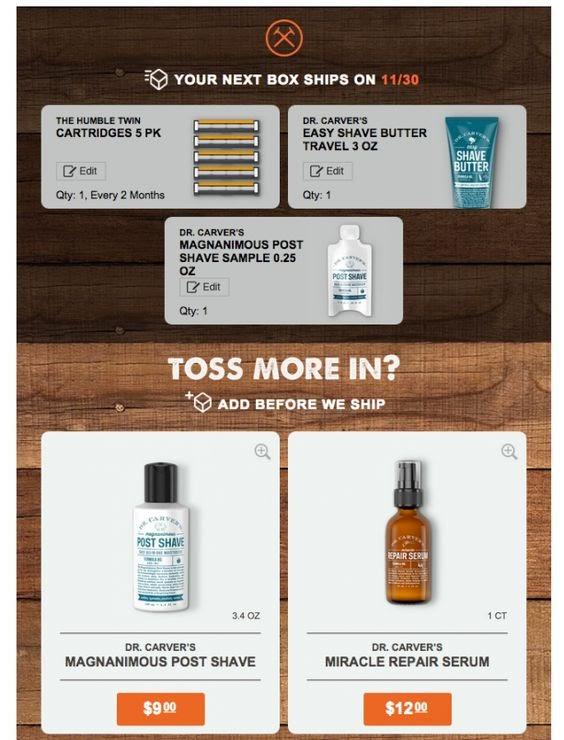
4. Make Use of Paid Advertising
It’s not exactly a secret, but social media websites aren’t about people being social on them: they are about making money. Sure, there are ways in which you can improve your organic reach on social media, but for the most, it’s all about paid ads, especially when it comes to Facebook. For starters, every time you share a new post, only 6% of your followers will see it, which is extremely low, regardless of how many followers you have. And if you just starting out and looking for how to promote your Shopify store, the answer is: not a lot. Fortunately, paid Facebook ads are affordable and effective.
Let’s do the numbers. Your average cost per click of Facebook ads is around $0.27 per click. Provided that your conversion rate is about 3%, which is the average for retail Facebook ads, you will need to make three sales at $27 to break even. So, if you sell three products that cost $10, minus the paid ads, you are left with $3. This might not seem like a lot, but keep in mind that this is just an example, since your goal is to shift hundreds or thousands of units. Also, how much you will ultimately make depends not just on Facebook ads, but also your conversion rate, which can be optimized further.
5. Build SMS Marketing Campaigns
If you are wondering about how to promote your Shopify store among your target audience, keep in mind that marketing campaigns are as effective as ever. We have already touched on that with email marketing. However, there is one issue with email marketing campaigns. Your average customer receives a ton of emails every day, which means that email open rates are on the steady decline, even on mobile phones. However, there is one form of marketing that wipes the floor with all of them when it comes to open rates. In case you haven’t guessed already, we are talking about SMS marketing.
That’s right, SMS marketing has an open rate of over 90%, not to mention that everyone who has a phone is able to send and receive SMS messages, so that’s an expanded audience right here. Also, unlike with all other forms of digital marketing, potential customers don’t have to have an active internet connection in order to receive ads and notifications. What can you use SMS messages for? Well, among other things, audience targeting and segmentation, promotion and sales info, as well as cart abandonment reminders, as in the case of email.
6. Write a Blog
After you have built a sizable following, making use of content marketing and writing a blog makes a lot more sense. Your blog not only useful and relevant advice for your potential customers, but it also generates traffic and drives more people to your store. As many as 61% of people have made a purchase after reading a relevant blog. Also, blogging increases your online footprint and beefs up your Google ranking, provided that you have done your SEO. In addition to that, having a blog enables you to write guest posts for other reputable blogs in your niche and build backlinks, which will improve your ranking even further.
People are tired of being sold and pitched to, which is why they listen to influencers so much, since they are regular people just like them, and not some corporate entity that is after their money. While you can’t put a face on your online store, you can write useful content and steer them gently towards your store. Keep in mind that running your own blog requires a lot of work, so you might want to think about using the blog feature on Shopify instead. Whatever you decide, try your best to remain consistent, both in terms of quality and frequency of posting. Ideally, you should post at least once a week.
Let’s go through a few tips you can use to make your Shopify, or any other blog for that matter, more popular and useful for your Shopify store:
- Create high-quality content – this means that you should focus on providing content that has real value. For instance, beauty, skincare, and makeup are some of the most popular e-Commerce niches. So why not make your content actionable and educational? If you are already promoting your newest hydrating skin cream on your website and social media, you can use your blog to write posts about healthy and useful skincare routines any reader can use, regardless of whether they are using your products or not.
In the long run, this will help your store establish itself as an authority and a thought leader in the niche, and once those customers do decide to purchase an actual product, they will get behind those brands which have a good understanding of the subject matter. Apart from that, Google looks at over 200 major and 10,000 minor signals when determining the ranking of your blog or website. The top three most important signals are high-quality, content, relevant keywords, and backlinks.
- Research relevant keywords – Now, if you can hire an on-page SEO specialist to do this for you, that would great, but if you can’t afford that at the moment, you can do some of this yourself. For starters, avoid targeting shorter, more general keywords such as “skincare” or “skincare routine”, because there is already too much competition for those, which means you are not very likely to rank on the first page for them.
- But, you can make use of more specific, longtail keywords, such as “the ultimate skincare routine in 2021”, or “10 best skincare tips for women”. You can also take notice of the People also ask boxes on Google, which usually feature very specific questions you can turn into your next blog post title or use them as a target keyword you will sprinkle all throughout your post.
- Build backlinks – this basically means that you will reach out to relevant and reputable blogs in your niche, and then ask them to write a free high-quality post for their blog, in exchange for a link that leads back to your own blog, website, social media, or one of your landing pages. This can help your Shopify store in several different ways. Google will improve your ranking provided that the backlink is coming from a relevant blog. Also, you will gain significant exposure and traffic, which in turn tells Google that your content deserves a higher ranking.
7. Promote Your Shopify Store in the Real World
Although it may seem counterintuitive to promote an online business that has no physical store in the real world, that is exactly what you should do, especially if you are certain that some of your target audience is in your local area. So how do you do it? Well, one of the ways would be to get Shopify’s “point of sale” care readers, so that your customer can make purchases on the spot. You can also research your local area for opportunities to promote or sell your products.
For instance, you can strike a deal with a local boutique to store some of your products and make them available for local customers. You can also take the old-school approach and hand out leaflets and brochures to promote your Shopify store even further and expand your customer base. Another good idea would be to set up a sale, a demonstration, or a promotional event at a place where a lot of potential customers might gather, such as a coffee shop, or a local shopping mall or market. The more proactive you get in your local community, the better.
8. Learn from Your Competitors
Regardless of how well-thought-out your plan is to promote your Shopify store, some things will work like a charm, and others will end up being a dead-end, and you need to accept that. However, it’s always better to learn from other people’s mistakes, rather than your own. In other words, you should take a look at what your competitors are doing, and then avoid making the same mistakes as them, as well as improving upon what they have done right. Take a look at their Shopify store, their product descriptions, blog, as well as their social media profiles.
This isn’t about doing the same thing as them, because then you will always be one step behind. But, it is about getting ahead of them using their mistakes, as well as their experience and knowledge. Perhaps there is a segment of the market they haven’t covered and which you can easily populate with your lineup of products.
Au Lit Fine Linens is an example of everything we have listed above done right. Just like their name indicates, they sell linens, as well as everything else that will help you get a good night’s sleep, such as sheets, divers, pillows, bath linens, and so on. The store itself has a really clean, fresh look with lots of bright and pastel colors, which is something that you would put in your bedroom anyways. However, while their store and their products are impressive, their blog is their party piece, where you can find information on anything from improving sleep quality to different bed sizes:
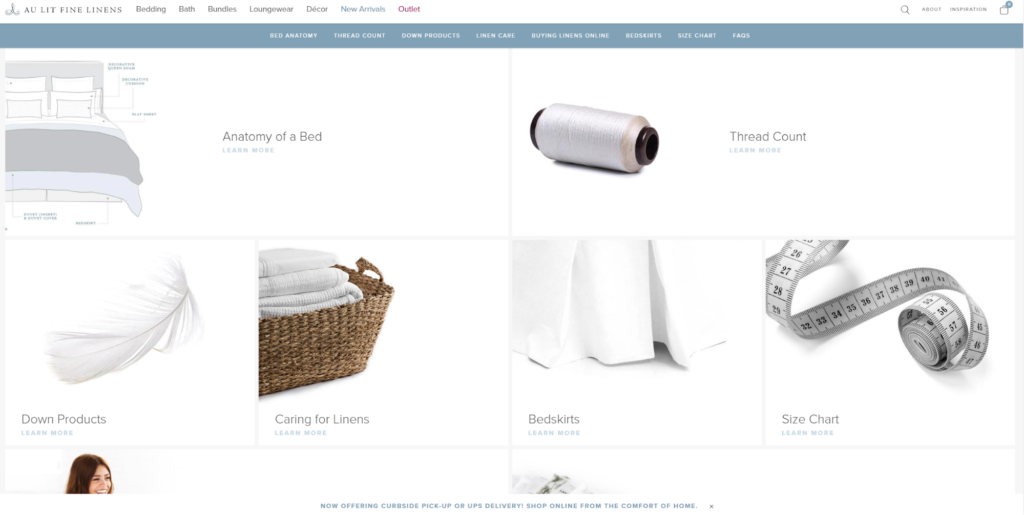
By putting the information first, and going into great detail to explain the most common questions and dilemmas their target audience might have, their content never comes off as promotional, even when they subtly mention their lists of best-selling linens, bedsheets, or duvets. And think about it this way: if their audience is looking for the right duvet size for their bed, there is a pretty good chance that they are in the market to purchase one. So, they are also aiming their content at serious buyers.
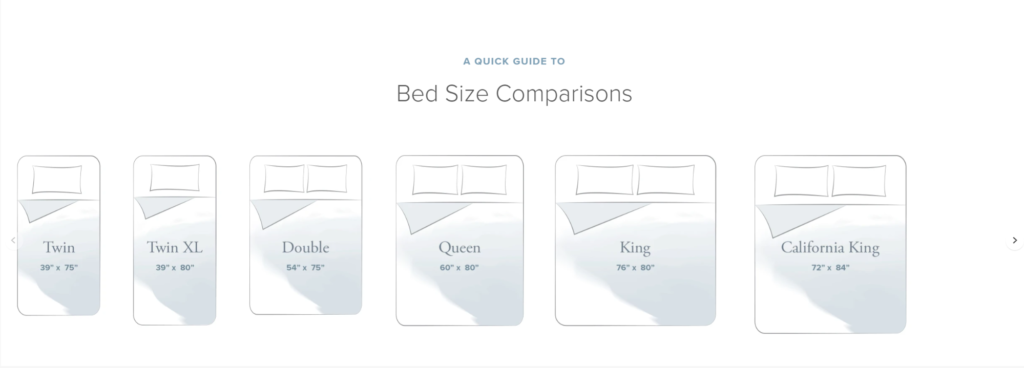
Final Word
Running a Shopify store is not an easy feat, because there so many moving parts, and so many different activities you need to perform and keep an eye on. We hope that this article will make your job easier, at least when it comes to promoting it. Start implementing these tips today. Good luck!
